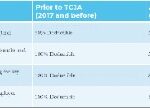Content
Before finalizing the payroll schedule that best suits you, you may also consider some other types of payroll schedules. Choosing the right pay schedule is a crucial https://kelleysbookkeeping.com/ decision for any organization, be it a large enterprise or SMB. It can determine the type of talent you attract and the long-term expenses you incur as a business.

Although your total annual earnings will be $42,000 with either option, this is definitely a factor that is worth noting — especially when you’re creating your monthly budget. Bi-weekly payment is where employees are paid on a specific day of the week, every two weeks. However, bi-weekly does not necessarily mean you will get paid twice a month. Bi-weekly pay is the most common payroll schedule for businesses in the United States. Payroll models can vary across organizations and usually take the form of weekly, biweekly, semi-monthly or monthly payment schedules.
How do I Calculate Bi-Weekly Net Salary?
Total tax liability is based on the total amount earned in a year rather than on paycheck frequency. But, before you can cut any checks, you first need to decide on a payroll schedule for your business. Most business owners will be quick to tell you that they don’t look forward to running payroll (even if they’re passionate about compensating their employees for a job well done).

Months with “extra” paydays can impact cash flow, so it’s important to account for them during cash flow planning. Before choosing, it’s important to know that states regulate how often you must pay employees. You might not be able to use biweekly pay or semimonthly pay frequencies in certain states. In a monthly pay schedule, payroll is processed 12 times a year on a fixed recurring date. Though it is the most cost-effective option for employers, employees are forced to wait a whole month to receive each pay check.
Monthly payroll
Our ability to centralize and coordinate global payroll cycles allows you to streamline your international payroll, ensuring accuracy in payment and full compliance with local laws. Contact us today to find out more about our international payroll solutions. An explanation of bi-weekly payroll and examples of how a business may employ this method of payment.
Semimonthly—as the name implies—is a pay schedule in which employees are paid twice a month. This is also referred to as bimonthly, and in this type of payroll, employees get paid on particular dates. Given the ease of calculation and consistency, bi-weekly payroll schedules offer benefits for both employers and employees. Payroll schedules can vary according to the business with the most common being weekly, biweekly, semi-monthly, and monthly payment schedules. An exploration into some of the key differences between a bi-weekly and a semi-monthly payroll schedule.
What Can an Employer Do if Payday Falls on a Holiday?
Finally, select the pay schedule that makes the most sense to you. After learning the difference between semi-monthly and bi-weekly payroll, let’s look at the pros and cons of each. Don’t worry, you’re not going crazy, you just haven’t fully grasped the semi-monthly vs. bi-weekly payroll debate yet. Lucky for you, we’ve compiled a full guide on what makes these two types of payrolls different.
For months where additional planning was not put in place, a small business may not have sufficient funds for a three paycheck month compared to a two paycheck month. When businesses operate on a biweekly pay schedule, overtime pay is much simpler to calculate than when operating on a semi-monthly pay schedule. Because calculations take place every other week, it is easy to manage overtime accordingly. There are some important differences when it comes to semi-monthly vs. biweekly payroll. Let’s first look at the unique attributes and benefits of the biweekly pay schedule. While a business may prefer one pay schedule over another, it’s important to note that some state laws dictate the types of payment schedules companies are allowed to implement.
Hopefully, by understanding each option, you can choose the right payment schedule for your small business. As an employee, one of these pay periods isn’t technically better than the other. You won’t make more or get taxed less by choosing one or the other.
One of the checks will be received in mid-month and the second check will arrive either at the beginning of the next month or on the last day of the current month. Usually, such payments are done on either the 1st or 15th day of the month or on the 15th and the final day of the month. According to the Bureau of Labor Statistics, 36.5 percent of employees are paid biweekly. Receiving up to two additional paychecks per month compared to a semi-monthly pay schedule is certainly a bonus for employees.
A research writer as well, she has been published in The Sage Encyclopedia and Mission Bell Media. This practice can be risky if the employee quits and doesn’t repay the estimated hours. Further, making adjustments can be time-consuming and prone to errors. Rachel Blakely-Gray is a writer for Patriot Software, a provider of payroll and human resources management solutions for small businesses. Get up and running with free payroll setup, and enjoy free expert support. Make sure your business gets the most out of payroll performance and stay compliant by keeping track of your payroll performance.
- The payroll processing on the semi-monthly system is not as straightforward as that of the bi-weekly system.
- As an employee, one of these pay periods isn’t technically better than the other.
- Now consider Bella, who works for a marketing firm and also earns an annual salary of $48,000.
- Because semi-monthly pay is on two solid days per month, it can be inconvenient when holidays occur.
- Because you must run payroll on a different day of the week, you could lose track of your responsibility.
The bi-weekly approach causes great havoc to budgets and cost analysis of companies. This is because a year has 52 weeks and they are not all well divided within the 12 months. Did you know a weekly pay schedule is the second most popular option what is the difference between biweekly and semimonthly among employers, with 32.4% of businesses opting to go this route? In fact, it may just be the easiest option, since you’ll be running payroll on the same day every week and know exactly when you’ll need to devote time to the process.


